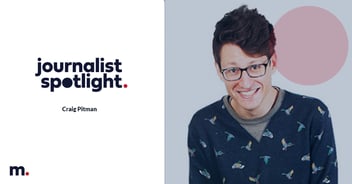Journalist Spotlight | Interview with Dr. Kevin Murray, Co-Founder and Managing Editor at Garland
As a knowledge-worker for the crafts, Dr. Kevin Murray strives to support craft-makers through information and advocacy. Garland Magazine thus seeks to weave the stories and practices of craft, sharing its rich tapestry to a wider audience.
Could you tell me a bit about how you’ve come to your current role and what led you to becoming a craft knowledge worker? Was there a time when you were predominantly a craft maker/artist yourself?
I was the first writer-in-residence at the Meat Market Craft Centre in Melbourne. This was a time when there was an interest in developing craft as an art form and I saw wonderful potential in creating exhibitions and writing about craft. So I spent my first couple of years working as an apprentice in different workshops in order to understand the process better and that left me in awe of the skills of makers.
Is there a distinction between craft and art? Why have these distinctions been imposed and where did the conception of craft as less than stem from?
Art is what you find in a gallery, while craft ideally is something you find in a market where you can look the maker in the eye. In a gallery, you are interested in what the work says, while at the market, you are curious about how it was made. However, the same object can find itself in both spaces.
The hierarchy emerged in the Renaissance with the transformation of art into a private luxury good. Patrons preferred to visit the studios of artists, which were relatively clean and studious, compared to the messy environment of a workshop. This was accentuated by capitalism and colonialism which demanded cheap labour.
In Knowledge Work in Service of the Crafts, I was fascinated by the divide between knowledge workers and craftspeople/artists. How does the dynamic between the two differ from that of an art historian/academic/curator and ‘traditional’ visual artist? Is it fair to say there is a larger divide between the abstract-worker and the object-maker in the craft sphere?
Art curators or critics are not expected to be themselves artists. But because knowledge of crafts depends so much on the experience of making, being a craftsperson oneself can be an advantage. There is often resentment of academics or curators who use the crafts in forms that exclude the makers themselves, such as peer-reviewed articles or collaborations that don't acknowledge the makers. Instead, I see value in a "knowledge worker for craft", who can use his or her distance from making to perform important functions such as judging, writing, curating and secretarial roles.
You’ve also said how the principles of craft making are antithetical to contemporary (capitalist) culture. Would you say that craft making is a transgressive act, and what is the enduring importance of craft?
As Marx identified as the "commodity fetish", there is a tendency in capitalism to overlook the means of production. This has been accentuated in today's hyper-consumerism with online shopping. The speed of consumption such as fast fashion does not give us time to appreciate how things are made. It's about the dopamine hit of the new purchase.
Given the environmental consequences of consumerism, craft is increasingly important as a means of slowing down. The awareness of skills that are passed down across generations also counters the individualism on which consumer culture is based.
What stories and perspectives would you like to feature more of in Garland?
I'm particularly keen on stories of discovery, where writers have learnt something particular about the experience of craft-making by either themselves or others. It's wonderful to get stories from remote places, like villages or townships.
How can craft practices and principles, given its tactile nature, be successfully transposed onto digital mediums and platforms?
We encourage sensory writing that shares with the reader scenes that smell, feel, sound and even taste. Many writers record an audio welcome for the reader so readers can imagine how the author sounds. This helps build a connection.
Otherwise, we created our first sensorium score last year, "In praise of insects". I'd like to do more of these events as a way of bringing back ceremony into our lives.
And lastly, what do you look for in content pitching?
The key is a story to tell. I'm not interested in the kinds of superlatives you get in media releases. Our readers will gloss over that kind of language. We are seeking to build an authentic connection with the reader.



